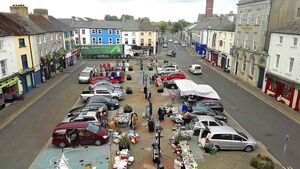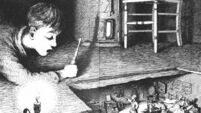Are the new Athy trading byelaws actually valid?

Emily Square Athy, market day in Athy in better times
A COPY of Athy’s casual trading byelaws 2025 indicates on its first page that the byelaws were ‘approved under section 6 of the as amended by the elected members of Athy Municipal District at their statutory meeting of 20 October 2025’.
Strangely, under the 1995 Act, the power to make byelaws in relation to the control, regulation, supervision and administration of casual trading in its functional area rests in the ‘local authority’, which is defined as ‘the council of the county, the corporation of a county or other borough or other council of the urban district’. The order made by the Athy Municipal Council would, therefore, appear to be invalid.
If that is so, it would seem that the county council cannot now just make an order similar to that of the municipal district’s without going through the entire procedure again in relation to advertising and receipt of submissions before the proposed byelaws are brought before Kildare County Council.
I was one of the (hopefully) many who filed a submission with the senior executive officer, Corporate Services Department of Kildare County Council. I filed my submission by post on 15 August but surprisingly did not receive an acknowledgement of my submission, nor a notification of the purported decision by a few members of Athy Municipal District. I would have expected Mr or Ms Senior Executive Officer, you having invited by public notice submissions with regard to the proposed byelaws, that the submissions at least would have been acknowledged.
The purported order made by the local municipal district members does not indicate that the 1515 market right has been extinguished, but presumably the council members relied on section 8 of the , which states ‘a local authority may carry on, manage and regulate a market or fair to which a market right owned by it relates as if it were a market established by it under the and shall have all such powers as may be necessary for that purpose’.
A declaration to that effect in the byelaws might have been appropriate, given that control of the 1515 market was granted to the town provost of the time and might reasonably claim it subsequently passed to the town sovereign, then to the later borough council. That council was succeeded in time by Athy Town Commissioners and Athy Urban District Council.
However, there were a few years following the abolition of the borough council before the town commissioners were formed. My question is: can Kildare County Council explain how the town commissioners, not having made any formal claim in respect of the market rights, could claim control of those rights and pass them on to Athy UDC and, following its abolition, to Kildare County Council.
Another question which needs to be answered is how any of the local authorities that followed the town provost of 1515 could claim ownership of the market. The 1515 charter stated that ‘the provost and his successors for the time being and the inhabitants of the same town may have one market weekly within the town aforesaid … and that the aforesaid provost and his successors by escheators and clerks of the market have correction of all kinds of weights and measures within the town and franchise aforesaid.’
As to ownership of the market, it is clear by reference to the charter that the provost and the townspeople have equal status in that regard. I note that under the of 1898, which established urban councils, section 31 referenced the power conferred by section 104 of the upon an urban authority to purchase a market ‘shall extend to authorise the purchase … of any franchise or rights to hold a market’.
This was never done by Athy UDC nor, to my knowledge, by Kildare County Council.
The Athy market, for all its obvious defects, is something we should retain. It needs to be improved, and I have previously cited the example of the authorities in Shoreham-by-Sea who provide attractive stalls for market traders, presumably at a small charge. I have also advocated the purchase of the Abbey grounds to free the town plaza of market activity and to provide much-needed parking to replace that lost in the plaza and the additional parking needed for Shackleton Museum visitors.
One other matter that has arisen post-submission time is the county council’s decision to allow traffic from the Monasterevin road direction to use a one-way system approaching the Carlow Road, with traffic from the Carlow Road direction to go through the Back Square and turn right or left at White’s Castle. It strikes me that if both routes were exchanged it would be of ease to traffic.
I am also concerned that the single lane road coming from the Monasterevin direction will be closed on market days, which according to the byelaws will be held in the plaza on Tuesday, Saturday and Sunday.
The time has come for Kildare County Council to make what might seem a courageous act, but certainly a correct one, by extending the market rights to the Back Square, Barrow Quay and the Abbey grounds. This would leave the plaza free at all times and exclude the need to close the one-way road outside the Bank of Ireland on market days.





